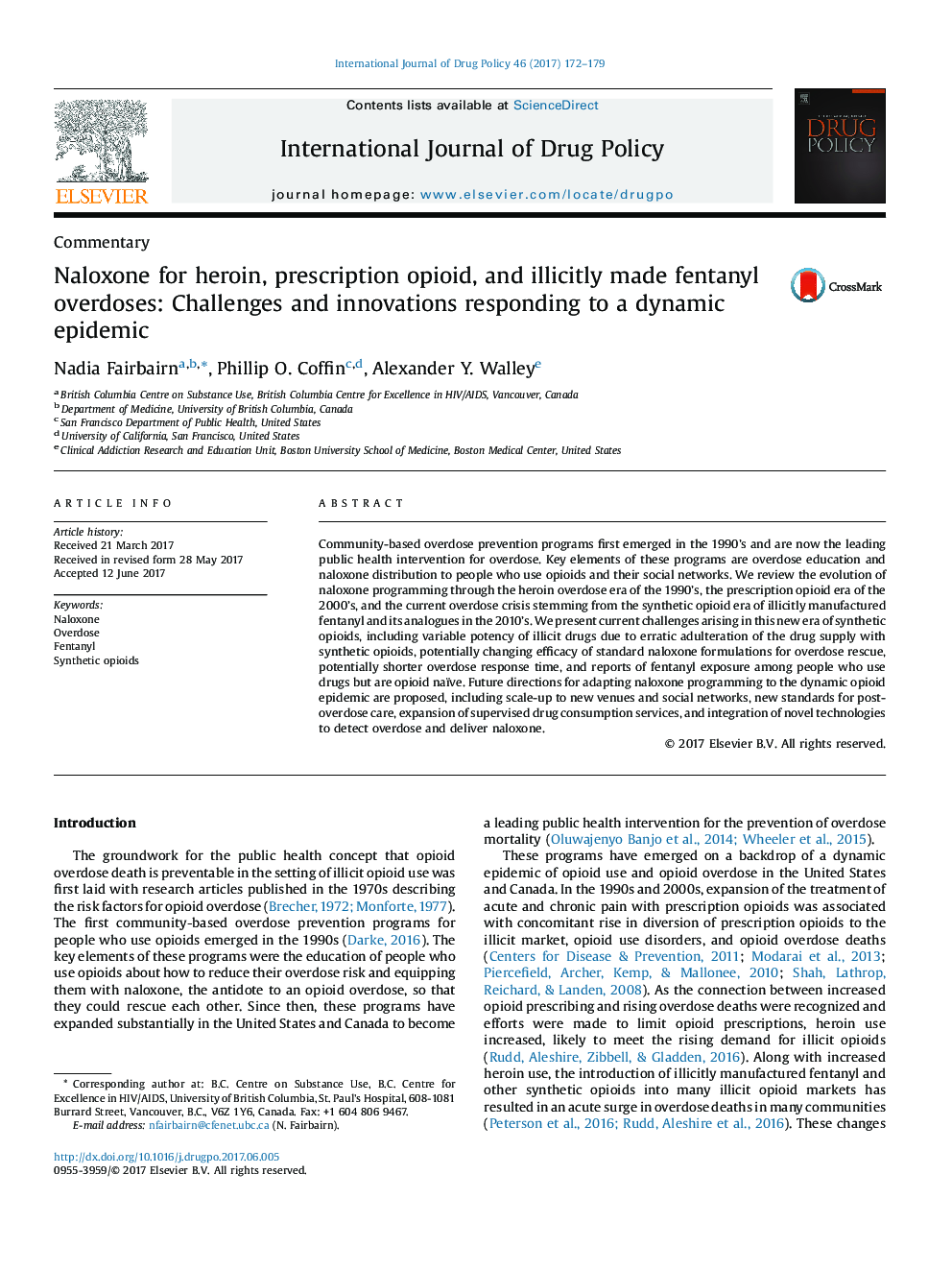| کد مقاله | کد نشریه | سال انتشار | مقاله انگلیسی | نسخه تمام متن |
|---|---|---|---|---|
| 5120679 | 1486259 | 2017 | 8 صفحه PDF | دانلود رایگان |
Community-based overdose prevention programs first emerged in the 1990's and are now the leading public health intervention for overdose. Key elements of these programs are overdose education and naloxone distribution to people who use opioids and their social networks. We review the evolution of naloxone programming through the heroin overdose era of the 1990's, the prescription opioid era of the 2000's, and the current overdose crisis stemming from the synthetic opioid era of illicitly manufactured fentanyl and its analogues in the 2010's. We present current challenges arising in this new era of synthetic opioids, including variable potency of illicit drugs due to erratic adulteration of the drug supply with synthetic opioids, potentially changing efficacy of standard naloxone formulations for overdose rescue, potentially shorter overdose response time, and reports of fentanyl exposure among people who use drugs but are opioid naïve. Future directions for adapting naloxone programming to the dynamic opioid epidemic are proposed, including scale-up to new venues and social networks, new standards for post-overdose care, expansion of supervised drug consumption services, and integration of novel technologies to detect overdose and deliver naloxone.
Journal: International Journal of Drug Policy - Volume 46, August 2017, Pages 172-179
